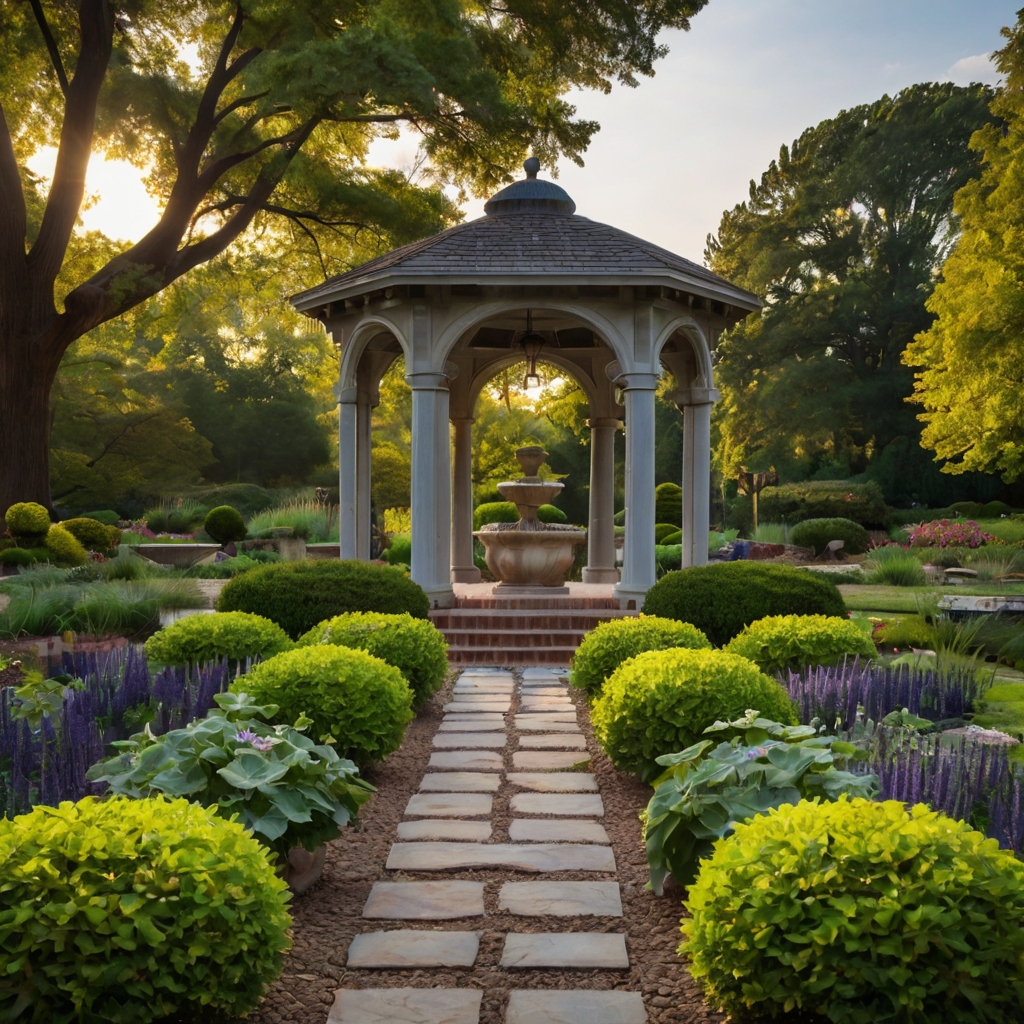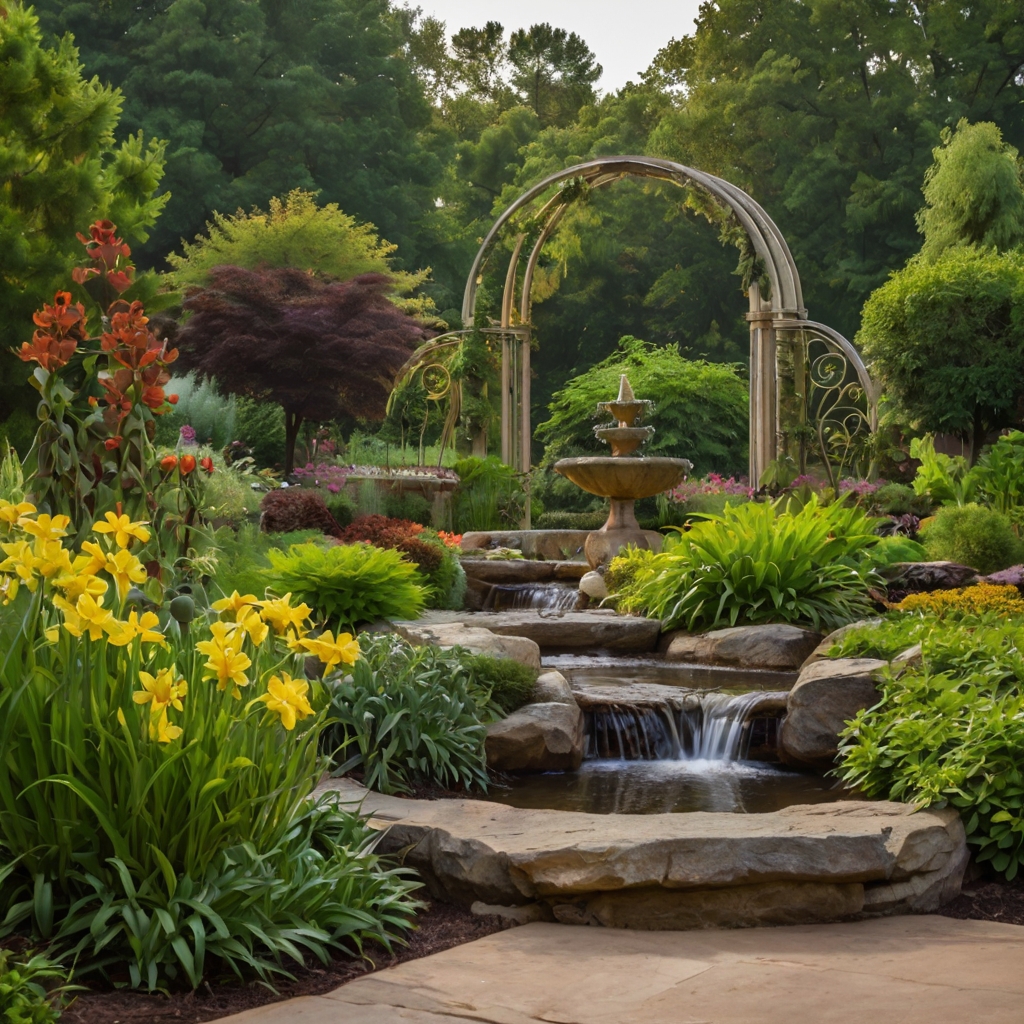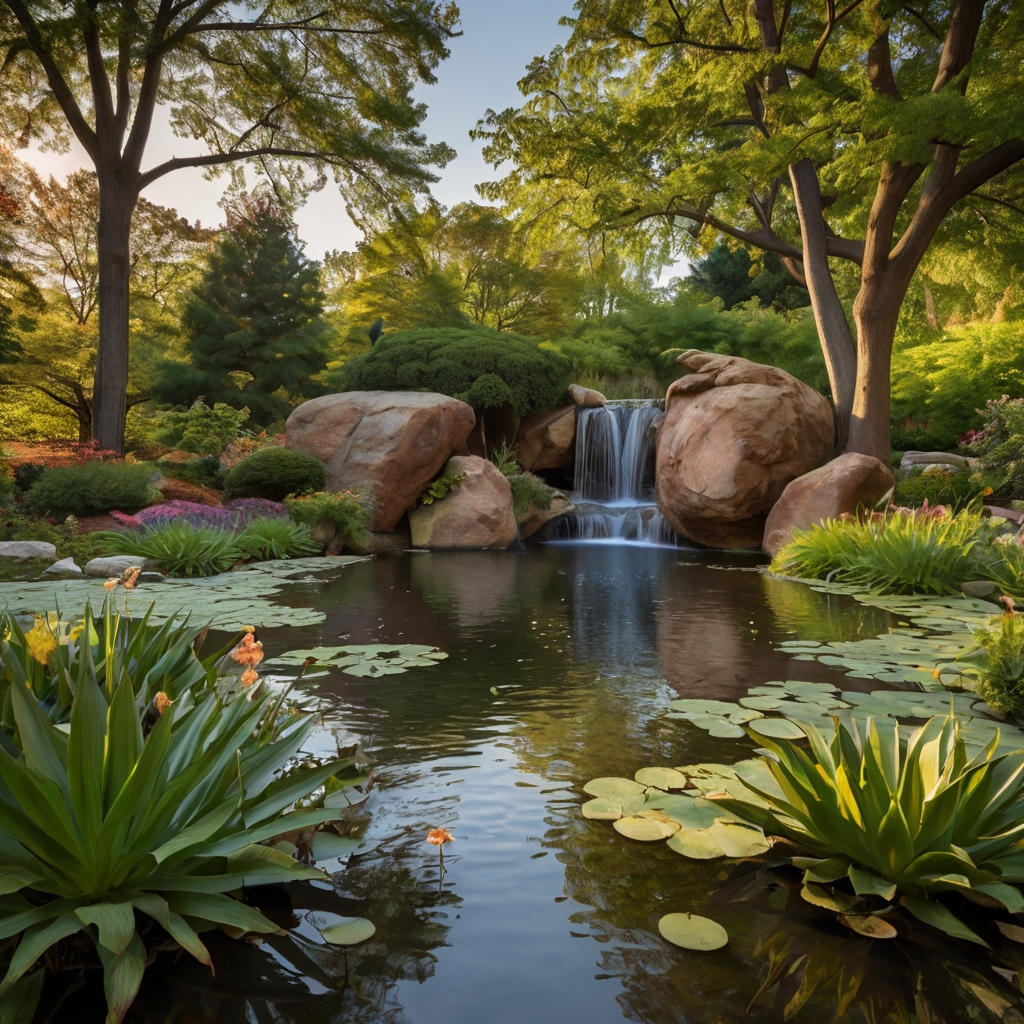Missouri Botanical Garden:
Inspiring Garden Design Ideas to Transform Your Outdoor Space
Introduction

Did you know that incorporating elements from world-class gardens can increase your property value by up to 20%? The Missouri Botanical Garden, one of America’s oldest and most prestigious botanical institutions, offers a treasure trove of garden design ideas that can transform any outdoor space from ordinary to extraordinary. Whether you’re planning a complete landscape overhaul or simply seeking inspiration for a small garden refresh, this historic garden provides countless design concepts that can be adapted to any space or budget.
Information About Missouri Botanical Garden
The Missouri Botanical Garden stands as a living museum of extraordinary plant collections and stunning landscape designs. Founded in 1859 by Henry Shaw, this 79-acre horticultural display has evolved into a National Historic Landmark and a premier research institution.
The garden features numerous distinct areas, each showcasing different garden design ideas:
- Japanese Garden (Seiwa-en): A 14-acre traditional Japanese strolling garden
- Chinese Garden (Nanjing Friendship Garden): Features distinctive architectural elements
- Ottoman Garden: Showcases Middle Eastern landscaping principles
- Victorian District: Contains formal garden designs from the 19th century
- English Woodland Garden: Demonstrates naturalistic landscape design
- Climatron: A geodesic dome conservatory housing tropical plants
- Center for Home Gardening: Displays 23 residential-scale demonstration gardens
Each area offers unique landscaping designs that visitors can adapt for their own spaces, from formal gardens to woodland retreats, water features to rock gardens.
Timing
A visit to the Missouri Botanical Garden typically requires 3-4 hours to fully appreciate its diverse garden designs and plant collections. According to visitor data, most guests spend approximately 2.5 hours exploring the grounds, though serious garden enthusiasts often devote an entire day to studying the various landscaping techniques and plant combinations. For those specifically researching garden design ideas, consider scheduling multiple visits throughout different seasons to observe how the garden landscapes transform throughout the year.
Step-by-Step Instructions for Getting Garden Design Ideas
Step 1: Plan Your Visit Strategically
Choose the right season for your garden design goals. Spring showcases bulb displays and flowering trees, summer highlights perennial borders and water features, fall emphasizes foliage color and texture, while winter reveals structural elements and evergreen design principles. Check the garden’s online calendar for special exhibitions and seasonal highlights that align with your landscaping interests.
Step 2: Begin with the Center for Home Gardening
Start your exploration at the Center for Home Gardening, which features 23 residential-scale demonstration gardens specifically designed to provide practical landscaping ideas for home gardeners. Take photos of plant combinations, hardscape elements, and spatial arrangements that catch your eye. The staff gardeners often work in these areas and can answer specific questions about design techniques or plant selections.
Step 3: Explore Gardens That Match Your Climate Conditions
Visit garden areas that most closely match your own growing conditions. The Missouri Botanical Garden includes sections dedicated to sun, shade, drought-tolerance, and moisture-loving plants. Pay special attention to how plants are grouped according to their needs, a fundamental principle of successful garden design. Note how designers use repetition of key plants to create visual cohesion throughout large spaces.
Step 4: Study Hardscape Elements and Garden Structures
Examine how paths, walls, arbors, and water features are incorporated into the landscape designs. The garden demonstrates how these permanent elements create the backbone of good garden design by directing movement, framing views, and providing year-round interest. Take measurements and note materials used to help adapt these ideas to your own garden scale.
Step 5: Attend a Garden Design Workshop or Tour
Enhance your visit by participating in one of the garden’s educational programs focused on landscape design principles. These workshops offer professional insights into color theory, plant selection, spatial planning, and sustainable practices. Guided tours focusing specifically on garden design are available seasonally and provide insider knowledge not found on general maps.

Technical and Artistic Information
General Information
The Missouri Botanical Garden (also known as Shaw’s Garden) is located in St. Louis, Missouri, spanning 79 acres of horticultural displays. Founded in 1859 by businessman Henry Shaw, it’s the oldest continuously operating botanical garden in the United States and a National Historic Landmark.
Climate and Resources
The garden operates in USDA hardiness zone 6b, experiencing hot, humid summers and moderately cold winters. This climate allows for a diverse range of plant collections while providing excellent examples of garden design ideas suitable for Midwestern landscapes. The garden maintains sophisticated irrigation systems, rainwater collection facilities, and demonstration areas for water conservation techniques in landscape designs.
Goals and Objectives
The Missouri Botanical Garden’s mission extends beyond display to include plant conservation, research, and education. Its landscape designs demonstrate environmentally responsible gardening practices while preserving historical garden styles and introducing innovative approaches to modern challenges like climate change and urban gardening.
Garden Varieties and Architecture
The garden features numerous distinctive areas:
- Climatron: A geodesic dome conservatory designed by Buckminster Fuller, housing tropical plants in a controlled environment
- Japanese Garden (Seiwa-en): One of North America’s largest Japanese strolling gardens, demonstrating principles of Japanese landscape design including borrowed scenery and balanced asymmetry
- Ottoman Garden: Featuring Middle Eastern design principles with geometric patterns and water channels
- Victorian District: Including Tower Grove House (Henry Shaw’s restored country home) surrounded by formal Victorian garden designs
- Chinese Garden: Showcasing traditional elements like moon gates and distinctive architectural features
- Children’s Garden: Demonstrating creative garden design ideas for family-friendly spaces
- Boxwood Garden: Displaying formal European garden design with precise geometric patterns
- English Woodland Garden: Illustrating naturalistic planting design with native and adapted species
Distinctive Features
What sets the Missouri Botanical Garden apart is its combination of historical garden preservation alongside cutting-edge sustainable landscape designs. Its demonstration gardens specifically showcase adaptable ideas for home landscapes, with particular strength in its collection of water-wise garden designs, shade gardens, and four-season interest landscapes.
Infrastructure and Planning
The garden features thoughtfully designed circulation systems with accessible pathways connecting various garden rooms and vistas. Strategic bench placement allows visitors to appreciate key views, while educational signage explains design principles and plant selections. The garden demonstrates effective use of topography, creating microclimates that support diverse plant collections.
Visitor Amenities
- Sassafras Café offering seasonal, locally-sourced meals
- Garden Gate Shop selling plants, garden tools, and design books
- Multiple educational facilities including the Sophia M. Sachs Butterfly House
- Kemper Center for Home Gardening with resources for home landscapers
- Several rental venues for weddings and events, including the Climatron and Spink Pavilion
- Doris I. Schnuck Children’s Garden featuring family-friendly design elements
Events and Festivals
- Chinese Culture Days (April)
- Japanese Festival (Labor Day weekend)
- Best of Missouri Market (October)
- Garden Glow holiday light display (November-January)
- Shaw Art Fair (early October)
- Weekly “Wednesday Walkabout” guided tours focusing on seasonal design highlights
Access Information
The garden is open daily from 9 am to 5 pm (closed December 25th), with extended summer hours. Admission for adults is $14, with discounts for seniors, students, and children. St. Louis City/County residents receive reduced admission. Membership options provide unlimited access and additional benefits.
Management and Governance
Led by a president and board of trustees, the garden employs approximately 250 staff members including horticulturists, researchers, and educators. Its landscape design team includes certified professionals who regularly contribute to industry publications on garden design trends and techniques.
Visitor Demographics
The garden attracts approximately 1 million visitors annually, with 70% from the local region and 30% from out of state or international locations. According to visitor surveys, 45% of guests cite garden design inspiration as a primary reason for their visit.
Healthy Alternatives to Traditional Garden Visits
While the Missouri Botanical Garden offers incredible inspiration, consider these alternatives for additional garden design ideas:
- Virtual garden tours available through the garden’s website showcase seasonal highlights and special collections
- The garden’s satellite locations like Shaw Nature Reserve and Butterfly House demonstrate different landscape approaches
- Community garden partnerships throughout St. Louis display urban gardening solutions
- The garden’s extensive online plant finder tool helps adapt professional designs to your specific growing conditions
- Local garden clubs affiliated with the Missouri Botanical Garden offer neighborhood garden tours showcasing regional adaptations
Introductory Garden Design Suggestions
For those beginning their garden design journey, the Missouri Botanical Garden recommends these starting points:
- Home Garden Walking Tour: Begin with the 23 demonstration gardens at the Kemper Center for Home Gardening to see residential-scale examples of various landscaping styles
- Four-Season Framework: Focus on creating a garden framework that looks good year-round by noting how the garden uses evergreens, structural elements, and plants with multiple seasons of interest
- Start Small: The garden’s design team recommends beginning with a small area to perfect before expanding, similar to how the botanical garden itself has evolved over 160+ years
- Sustainable Practices: Incorporate rain gardens, native plantings, and water-wise design principles demonstrated throughout the grounds
Common Mistakes to Avoid
Based on the garden’s visitor education programs, these are the most common garden design mistakes and how to avoid them:
- Ignoring Site Conditions: The Missouri Botanical Garden demonstrates zone-appropriate plantings grouped by water and light needs, showing how design must work with natural conditions
- Neglecting Scale and Proportion: Garden displays show proper spacing and mature plant sizes to avoid overcrowding or underwhelming spaces
- Forgetting Year-Round Interest: The garden’s designs incorporate structural elements, evergreens, and plants with multiple seasons of appeal to ensure gardens look good beyond peak flowering periods
- Poor Circulation Planning: Pay attention to how the botanical garden creates intuitive pathways that guide visitors through spaces, creating both function and aesthetic appeal
- Overlooking Maintenance Requirements: Demonstration areas include signage about maintenance needs, helping visitors create beautiful but manageable landscapes

Visitor Encouragement Tips
To maximize your garden design inspiration visit:
- Photography Strategy: Bring a camera and notebook to document design ideas, plant combinations, and hardscape elements that could be adapted to your space
- Seasonal Timing: Plan multiple visits throughout the year to see how garden designs transform with the seasons
- Expert Access: Attend “Talk to the Experts” sessions held regularly where staff horticulturists answer garden design questions
- Educational Programs: Participate in workshops specifically focused on home garden design, held monthly throughout the growing season
- Resource Collection: Visit the garden’s library which contains thousands of books on landscape design principles and techniques, open to visitors during regular hours
Conclusion
The Missouri Botanical Garden offers unparalleled inspiration for garden design ideas, from small-space solutions to grand landscape visions. Its 160+ years of horticultural excellence provide tested design principles that work in real-world conditions. By studying its various garden rooms, plant combinations, and structural elements, you can transform your own outdoor space into a beautiful, functional landscape that brings joy throughout the seasons.
Ready to start your garden transformation? Visit the Missouri Botanical Garden, take plenty of photos, attend a design workshop, and begin applying these professional landscaping designs to your own unique space. Share your garden design journey in the comments below or subscribe for more garden inspiration and tips.
Frequently Asked Questions
When is the best time to visit for garden design inspiration?
Each season offers unique design lessons, but spring (April-May) and fall (September-October) showcase the garden at its peak design moments. Professional landscape designers often recommend fall visits when structural elements are more visible.
Does the Missouri Botanical Garden offer professional landscape design services?
While the garden doesn’t provide direct design services for private properties, it offers numerous workshops and classes on garden design principles. Their “Garden Design Basics” course, offered quarterly, provides hands-on training for home gardeners.
How can I adapt ideas from such a large garden to my small yard?
The Center for Home Gardening specifically demonstrates scaled-down versions of larger landscape designs. Look for the “Small Space Solutions” demonstration area which showcases techniques for maximizing design impact in limited spaces.
Are there garden design ideas for difficult conditions like shade or poor soil?
Absolutely! The garden features specialized areas demonstrating solutions for challenging landscapes, including the Dry Streambed Garden (drought conditions), Woodland Garden (deep shade), and Rain Garden (poor drainage areas).
Can I bring plants home from the Missouri Botanical Garden?
While you can’t collect plants from the display gardens, the Garden Gate Shop sells many plants featured in the landscape designs, including some propagated directly from the garden’s collections. Several plant sales throughout the year offer specimens specifically selected for regional success.
